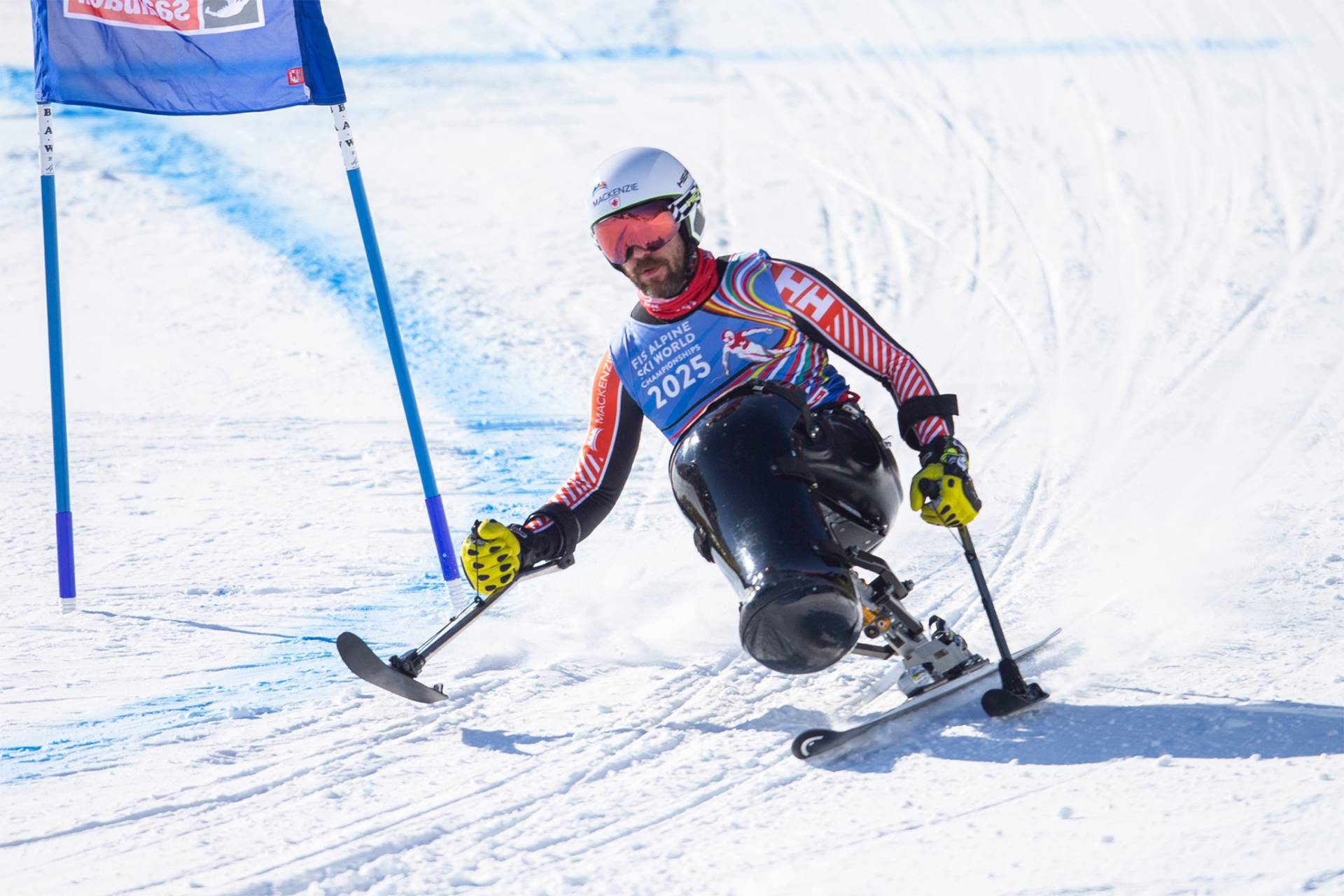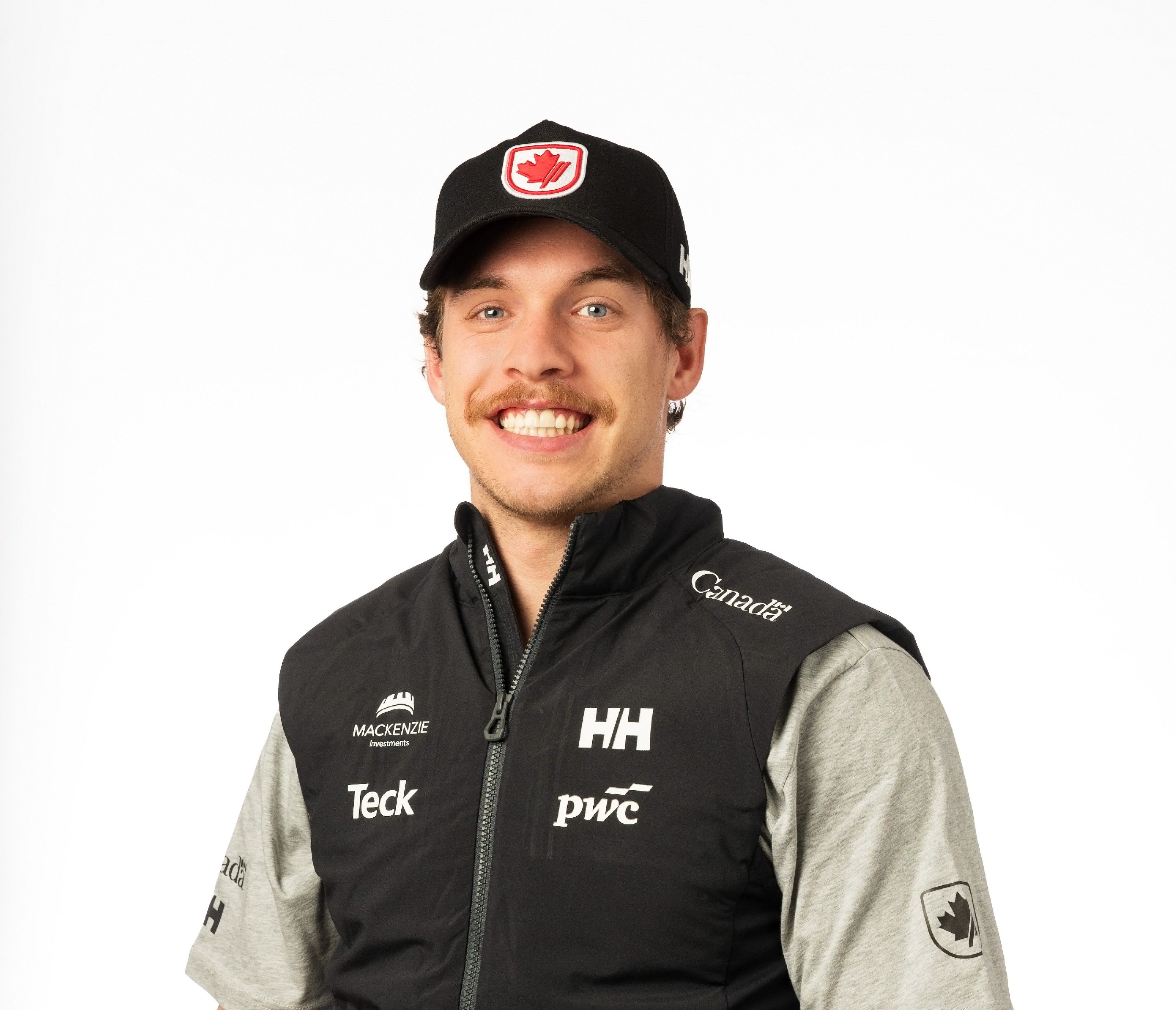Slalom and giant slalom were the only two alpine events at the first Paralympic Winter Games, held in Örnsköldsvik, Sweden, in 1976. Today, athletes with a physical disability compete in five alpine events: downhill, alpine combined, super G, slalom and giant slalom, and use some of the same venues as the women's World Cup circuit.
Para-alpine skiing has three main classification categories: visually impaired, standing and sitting. Male and female athletes with a physical disability such as a spinal-cord injury, cerebral palsy, amputation and visual impairment compete within these categories.
It’s about speed: electrifying, breathtaking speed.
It’s a sport that requires great courage and skill in equal measure; strength, agility, balance and technique. And although there have been great advances in ski equipment and technology in recent times, the essence of the sport has remained constant. There are no judges handing out scores; no marks awarded for style. It’s strictly a numbers game in which the time it takes a skier to go from the start to the finish, passing through a series of gates on the way down, determines the outcome of each race. In literal terms, alpine skiing – so called because it refers to skiing at or near the tree line – is the sport of sliding down snow-covered hills or mountains on skis with fixed heel bindings.
There are several different kinds of alpine skiing, but it is most commonly divided into the five core disciplines ski racers compete in at the Paralympics:
* Para-alpine skiing is governed by the International Paralympic Committee (IPC) through the International Paralympic Alpine Skiing Committee (IPCAS). IPC rules and regulations are used for all para-alpine events.
Categories
Visually impaired
- B1 – Visual acuity is poorer than LogMAR 2.60.
- B2 – Visual acuity ranges from LogMAR 1.50 to 2.60 (inclusive) and/or the visual field is constricted to a radius less than 5 degrees.
- B3 - Visual acuity ranges from LogMAR 1.40 to 1 (inclusive) and/or the visual field is constricted to a radius less than 20 degrees.
In all visually impaired classes, a guide is mandatory; the competitor and the guide are a team. Blind skiers are directed down the course by guides skiing in front using only voice signals or radio communication.
No physical contact between the guide and competitor is allowed during the race. The distance between guide and athlete in slalom must be less three (3) gates and less than two (2) gates for GS, SG and DH, excluding delay gates and vertical combinations.
All guides must VI competitors from the front.
All competitors in the completely blind class (B1) must wear approved blacked-out goggles during the competition.
Standing
- LW1 - double above-knee amputees, or impairments that cause similar loss of limbs
- LW2 – single above or below knee amputation, or impairments that cause a similar loss of limb
- LW3 - double below-knee amputees, or impairments that cause a similar loss of limbs
- LW4 - single below knee amputation, or impairments that cause a similar loss of limb
- LW5/7 – double above or below elbow amputation, or impairments that cause a similar loss of limb
- LW6/8 - double above or below elbow amputation, or impairments that cause a similar loss of limb
- LW9 – equivalent activity limitation of amputation in both upper and lower limbs
Athletes in certain classifications (example, single-leg amputees who ski without a prosthesis and sit-ski users) use special poles called outriggers. Outriggers have short ski blades on the end and help the skier with balance.
A complete listing of the classifications and other information can be found here (http://www.paralympic.org/alpine-skiing/rules-and-regulations/rules)
Sitting
- LW10 - mono skiers (high degree of paraplegia, no control in mid/lower body)
- LW11 - mono skiers (lower degree of paraplegia, with limited core control)
- LW12 - mono skiers (lower degree of paraplegia, possible lower incomplete paralysis)
Some athletes with a physical disability compete from a sitting position using a sit-ski, also called a mono-ski. As the name suggests, mono-skis have a specially fitted chair over a single ski. The chair includes seat belts and other strapping, as well as a suspension device to minimize wear and tear on the skier's body.
Disciplines
Downhill
Because it involves the highest speeds and, as a result, the biggest risks, downhill is the most glamorous of all the alpine and para-alpine disciplines. Skiers can reach speeds of up to 130 kilometres per hour on a typical World Cup downhill course. Each course is designed to test skiing ability at high speed, through challenging turns, shallow dips, flats and jumps. The turns are strategically placed to control racers' speed. Downhill skis are longer than slalom skis, in order to provide more stability at high speed. Ski poles are bent in order to curve around the body as the racer stays in an aerodynamic “tuck position.” The title of downhill world champion is one of the more prestigious prizes in the sport, and Canada’s Mac Marcoux (guided by BJ Marcoux) won the title at the 2015 IPC Alpine Skiing World Championships held at Panorama Resort in B.C.
Super-G
Super giant slalom (or super-G) combines the speed of downhill with the turns of giant slalom. Like downhill, it is considered a speed event where racers take one run down the course. It features long, sweeping high-speed turns on courses that have vertical drops only slightly less steep than in downhill. The athlete’s one-run time determines the order of finish.
Slalom
Slalom is a technical event. The world’s best slalom racers use aggression, strength and agility to make their way down shorter courses that feature the most turns of any alpine event. The skier with the best combined time from two separate runs is declared the winner. Because slalom skiers take a direct line and knock poles out of the way as they pass through (referred to as “blocking”), they wear protective equipment that includes shin pads, arm guards, padded gloves and face guards. The course is shorter than other alpine skiing events and has a high number of gates (50-75 gates). The penalty for missing a gate is disqualification. Each athlete completes two runs on the same day on different courses. Times from the two courses are added to determine the order of finish.
Giant slalom
As the name suggests, giant slalom features a longer course than traditional slalom, with at least 30 gates. Considered a technical discipline, giant slalom skiers use skis that are longer than slalom skis but shorter than downhill or super-G skis. Giant slalom generally features two runs – held on different courses on the same ski run on the same day. The skier with the fastest combined time wins.
Super combined
Consisting of a shortened downhill or super-G run followed by a slalom run, the super combined event is an exciting race that showcases skills in both technical and speed events. Combined times determine the order of finish.

